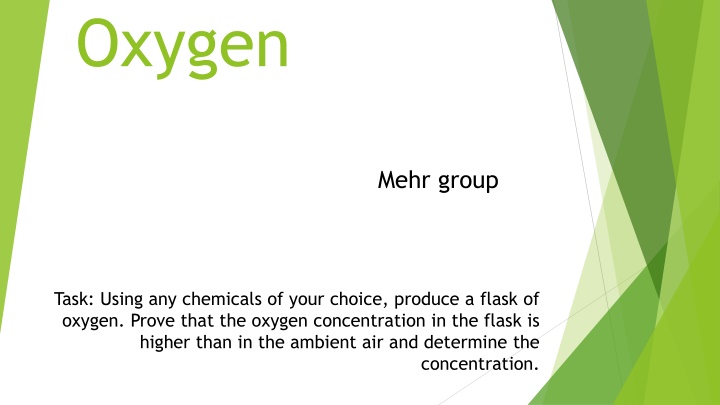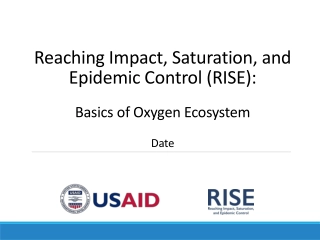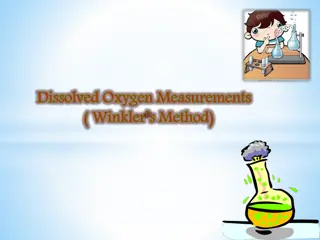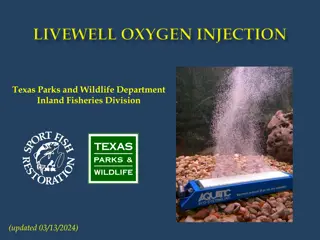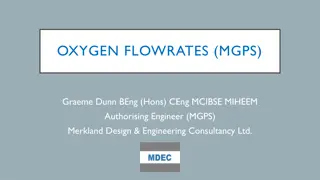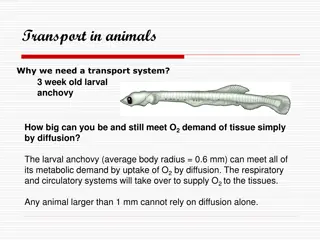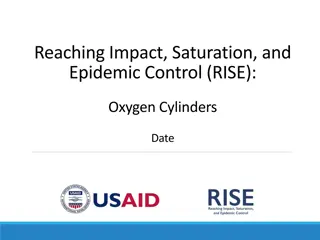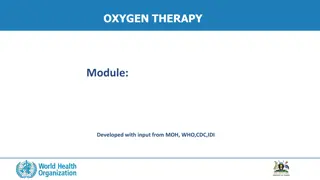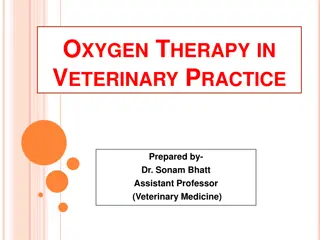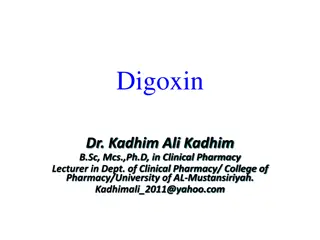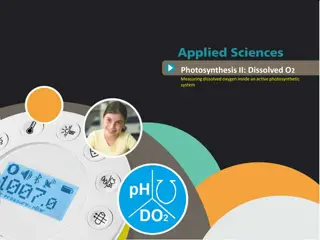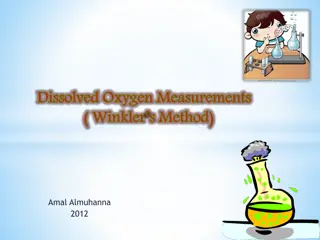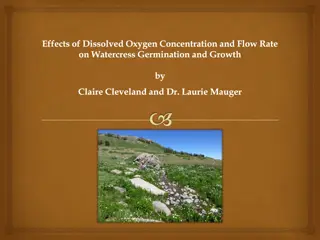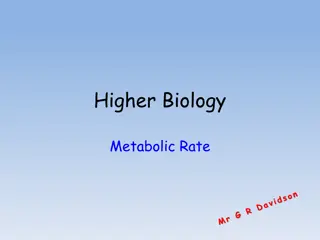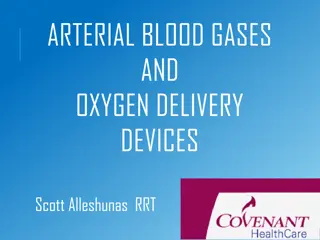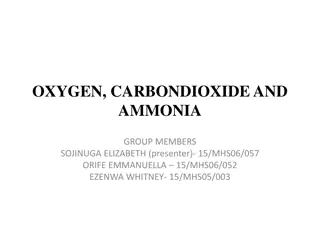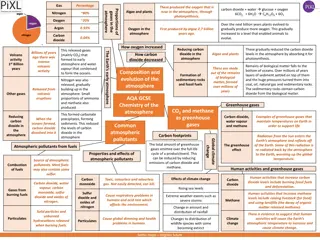Producing Oxygen and Comparing Concentrations
Oxygen production experiment using potassium permanganate, demonstrating higher oxygen concentration in flask than ambient air. Overcoming challenges to validate oxygen presence. Various methods discussed.
Download Presentation

Please find below an Image/Link to download the presentation.
The content on the website is provided AS IS for your information and personal use only. It may not be sold, licensed, or shared on other websites without obtaining consent from the author.If you encounter any issues during the download, it is possible that the publisher has removed the file from their server.
You are allowed to download the files provided on this website for personal or commercial use, subject to the condition that they are used lawfully. All files are the property of their respective owners.
The content on the website is provided AS IS for your information and personal use only. It may not be sold, licensed, or shared on other websites without obtaining consent from the author.
E N D
Presentation Transcript
Oxygen Mehr group Task: Using any chemicals of your choice, produce a flask of oxygen. Prove that the oxygen concentration in the flask is higher than in the ambient air and determine the concentration.
What is oxygen? colorless odorless reactive gas atomic number 8 Gas that Oxygen forms about 20 percent of the earth's atmosphere, and is the most abundant element in the earth's crust, mainly in the form of oxides, silicates, and carbonates.
Hypothesis We can decompose potassium permanganate to produce manganese dioxide and oxygen. We can then collect oxygen in a test tube and check if oxygen is present using a splint.
The Equipment Potassium Permanganate: 0.14 g of the solid. Solution in Water. 2 test tubes Plastic funnel Splint Bunsen Burner
Errors Limitations of element in the laboratory e.g. hydrogen peroxide. Broken test tube Splint wasn t lighting so we changed our experiment by using water in the test tube and proving the production of oxygen when bubbles were produced.
How did we overcome this? Bubbles mean oxygen is produced!
Our Experiment We heated the potassium permanganate to 240 degrees Celsius and it decomposed to produce oxygen. Potassium manganate and manganese dioxide was also produced. Oxygen gathered in the test tube. 2 KMnO4 ==> K2MnO4 + MnO2 + O2
Other Methods The decomposition of hydrogen peroxide using the catalyst manganese (IV) dioxide.
references http://www.dictionary.com/browse/oxygen http://www.ucc.ie/academic/chem/dolchem/html/elem 008.html http://techbrowsing.com/?from=land#&land=1
